ABOVE: Writer Rachel Kondo returned to her home island of Maui with her husband, Justin Marks, in 2022. Their house, a refurbished sugar plantation estate surrounded by fruit trees, includes a special feature: an entertainment room with a screen large enough to bring Hollywood to Haiku.
Rachel Kondo had a reputation for being "extra" at Maui High School: extra sweet, extra smart and extra ambitious. For a tenth-grade assignment on the Middle Ages, she didn't just write the essay; she sewed medieval clothing, built a castle out of refrigerator boxes—complete with drawbridge—and emerged from her cardboard fortress to deliver her essay in full costume. "I could see the faces of all my classmates saying, 'Uhhh, you took that way too far,'" she laughs. "So my nickname became RTM: Rachel-Too-Much."
Kondo lives on a vine-covered road in Haiku, Maui, with her husband, two daughters and a white puffball dog. The bichon frise's mod bangs hide its missing eyes. "We rescue old, seriously broken dogs," Kondo explains. She possesses the same spill-over humor and eagerness to please of her teen years. You'd never guess that she's now a big shot—a powerful storyteller and executive producer of Shogun, one of Hollywood's hottest TV shows.
Kondo's parents married young and raised her and her two siblings within Maui's tightknit Evangelical Christian community. When Kondo turned 11, her father, a letter carrier at the Kahului Post Office, began training his middle daughter to play basketball. Practice started at 4 a.m. and included protein shakes and weightlifting. "He was a little bit kolohe [naughty] as a teenager," says Kondo. "Basketball became a new path for him."
She dived into books, mainly period romances, and fantasized about life beyond Maui. "I thought that if I could just get to the Mainland, I could go anywhere in the world," she says. Getting there required money her family didn't have. "So I made a list of the five points that I had to excel in: academics, athletics, community service, leadership and faith."
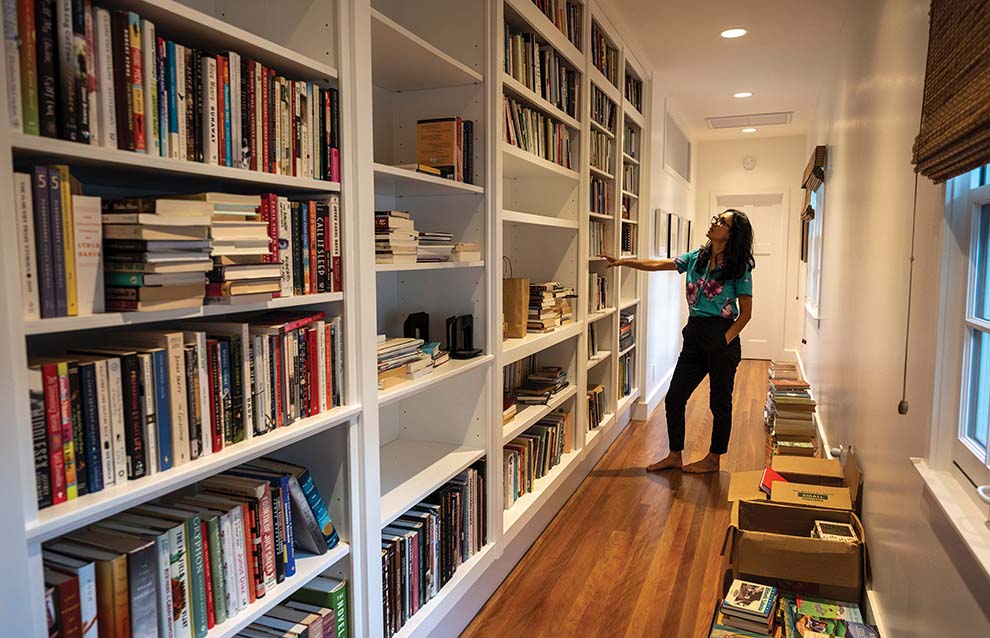
She applied for fifty-two scholarships and won enough of them to catapult her across the Pacific to Point Loma Nazarene University in San Diego. She spent her junior year studying abroad in Scotland, which was revelatory. "I stepped out of the Evangelical bubble," she says. She earned a degree in journalism and returned home to Maui to juggle multiple jobs.
As happens, a friend of her mother's knew a woman with a son in Los Angeles, who had a spare room. "Really it was a kitchen nook," says Kondo. But it was enough. The City of Angels enthralled her. "The dirt, the grime, the traffic ... I loved it!" She scraped by as a waitress until another friend of a friend introduced her to an agent at CAA, the biggest talent agency in town. The agent agreed to meet Kondo for coffee. "I think she was a little bit worried about me," says Kondo, "because within five minutes of chatting, she said, 'I'm going to get you a job at CAA. And you need to move out of the kitchen nook, so you're going to live with my mother.'"
The job at CAA didn't last; by her own admission, Kondo was a lousy assistant. On one occasion she signed something she shouldn't have, essentially attaching an A-list actor to a movie that he had no intention of doing. Her boss—a screamer—marched her down to legal affairs to confess what she had done. "CAA was brutal," Kondo says. "The irony is, I'm now a client of theirs."
The living situation proved more successful. The agent's mother became a dear friend and served as the wedding officiant a few years later, when Kondo fell in love and married Justin Marks. Unlike Kondo, Marks had been a good assistant. He'd known since age eight that he wanted to work in film. The week he graduated from Columbia University, he flew to LA and landed his first job as a producer's assistant when they met.
While Kondo had found love, she was still searching for a place to pour her talents. She enrolled in creative writing classes at UCLA and began writing "Beverly," a story loosely based on her father and set in Happy Valley on Maui. Impressed, her professors suggested she pursue an MFA. She applied to seven programs and got accepted by five—an astonishing rate of success.
"I had five minutes of basking in shock and awe," says Kondo. "From that point forward, I was in despair." She struggled with imposter syndrome, she says. "I was married, 32 years old and going back to school with people who are Ivy League-educated, very young and very smart." Still, she packed her laptop and headed out to the Michener Center for Writers at the University of Texas.
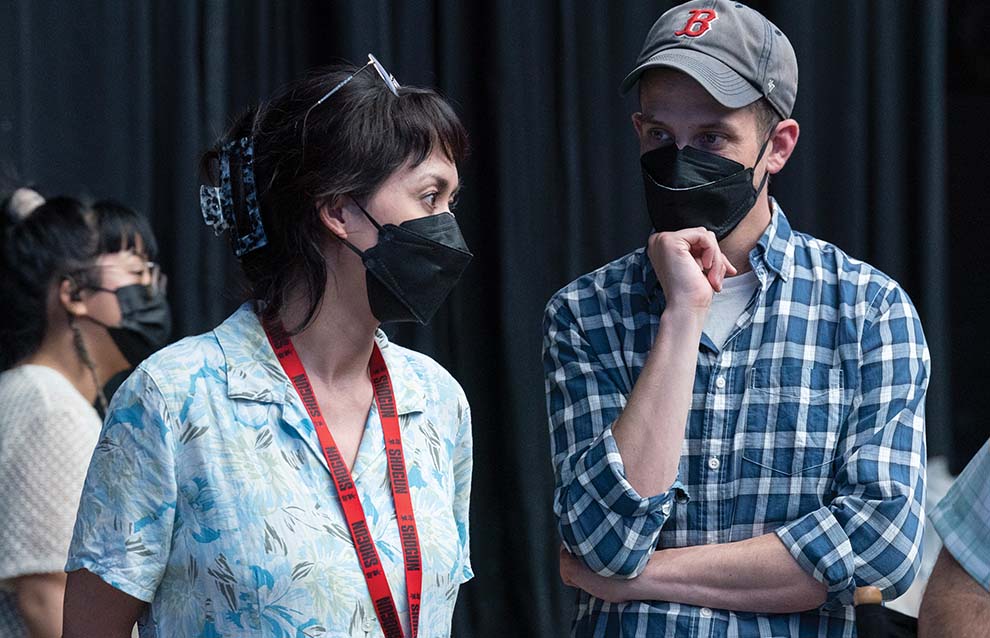
Six weeks after Kondo and Marks finished writing Shogun, COVID hit and Japan closed to nonresidents. The film crew relocated to Vancouver, where they re-created seventeenth-century Japanese villages and palaces. They filmed ten episodes over ten months—while masking and testing. "The worst part," says Kondo, "we didn't see each other's faces because we wore masks sixteen hours a day."
For three years she honed her craft in the Lone Star State. As a Japanese American, she had felt the sting of racism before, but in Texas she had her first brush with classism. "People were suspicious of me and my intentions because I was a postman's daughter," she says. A visiting writer discouraged her from writing in Hawaiian pidgin—inferring that the creole language that emerged out of Hawaii's sugar plantations was too complicated, too political. This only strengthened Kondo's resolve to write about her home. She published "Beverly," her very first short story, and won $20,000 as a finalist for the Keene Prize for Literature.
Understandably, she felt dubious when another, more astute professor told her that "Beverly" wasn't quite complete. "In the softest, gentlest Texan drawl, he urged me to dig deeper," says Kondo. She reworked the story into "Girl of Few Seasons," just shy of ten thousand words, but each word shines. Her potent imagery reveals a Hawaii landscape both familiar and startlingly fresh—a place where a boy "could guess the size and heft of the gecko that clicked its tongue into the darkness." The story follows a young man preparing to enlist during the Vietnam War:
For some, the Vietnam War was about moral duty. For others, it was a son grown too fast and gone. But for Ebo, the war was not about anything, not even killing or dying. He thought Vietnam might be like Maui, a place too quiet for fear. He thought the war might be a nameless river flowing strong after a heavy rain. If he let it, the war would take him away from Happy Valley to places he'd never been.
The literary journal Ploughshares published "Girl of Few Seasons," which was named a finalist for the O. Henry Award and a juror favorite.
By the time Kondo finished grad school, her husband's film career was in full swing. He'd written the screenplays for Top Gun: Maverick and The Jungle Book, directed by Jon Favreau, which grossed nearly $1 billion worldwide. He had started with FX as a showrunner, the person with creative control over a project. The television network hoped he'd take on something they'd been developing for five years: Shogun.
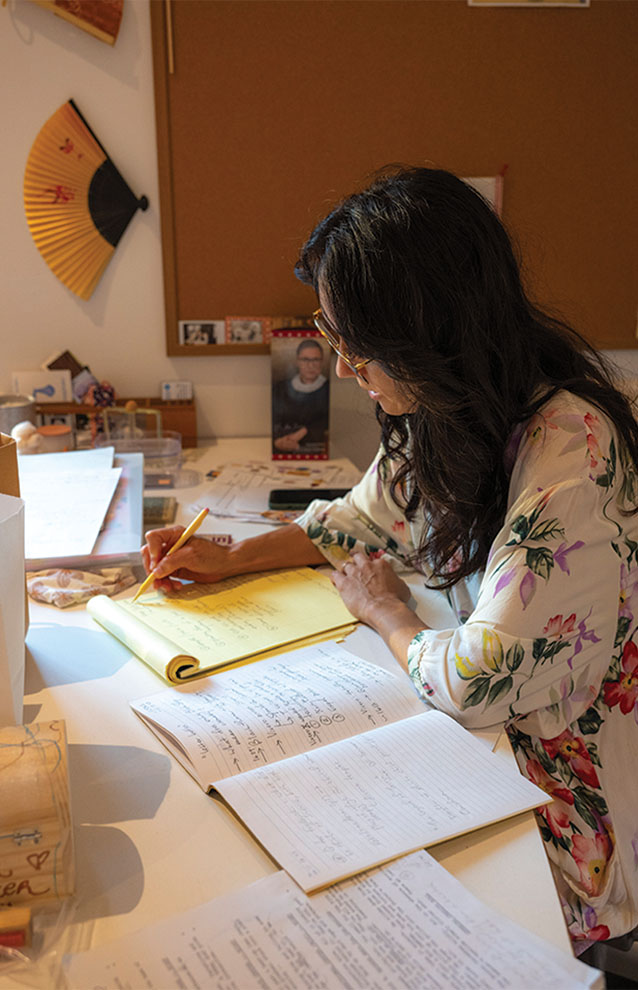
"Shogun has a very modern message," says Kondo. "How do we encounter other cultures and people?"
The 1975 novel by James Clavell showcases one of the most dramatic periods in Japanese history. The fictional saga starts in the year 1600 and closely parallels the rise of a real-life samurai, Tokugawa Ieyasu, and the shipwrecked British sailor who becomes one of his vassals. Shogun was first adapted for TV in 1980; the award-winning miniseries starred Richard Chamberlain and Toshiro Mifune and sparked a nationwide trend for all things Japanese: sushi, kimono and martial arts.
Marks wanted nothing to do with it. He worried that the "stranger in a strange land" tale was dated and bogged by tropes. Plus, he was hesitant to appropriate someone else's culture. "What about me?" Kondo countered. "I'm Japanese." Together, the couple dug into Clavell's 1,100-page tome and discovered a propulsive and current story. "Shogun has a very modern message," says Kondo. "How do we encounter other cultures and people? What do we bring to the table? What do we need to set aside? What do we gain? What do we lose?"
She and Marks wrote the first two episodes together. They'd never collaborated before; they had very different work practices; and Kondo was pregnant with their first daughter, Cora. Thus began their five-year journey to bring medieval Japan into Americans' living rooms. "I don't know how we had the audacity to think we could do it," Kondo laughs. They assembled a team of mostly Japanese writers and producers and consultants, including Eriko Miyagawa and Mako Kamitsuna. "I thought this might be a very good opportunity to remake this project now," Kamitsuna said in the official Shogun podcast. "To put up the mirror for the Western audience and Western people to look at their own history of dominance and colonization."
Lead actor Hiroyuki Sanada plays Yoshii Toranaga, the strategic samurai who aspires to end centuries of civil war by uniting fractious lords under an all-powerful shogun. Sanada also assumed the role of producer on the set, coaching fellow cast members how to walk, sit and hold their swords like samurai. He would regularly jump between his horse and a producer's chair customized to accommodate his extravagant costumes. "Every day for an entire year, he was either in front of the camera or behind it with us," says Kondo.
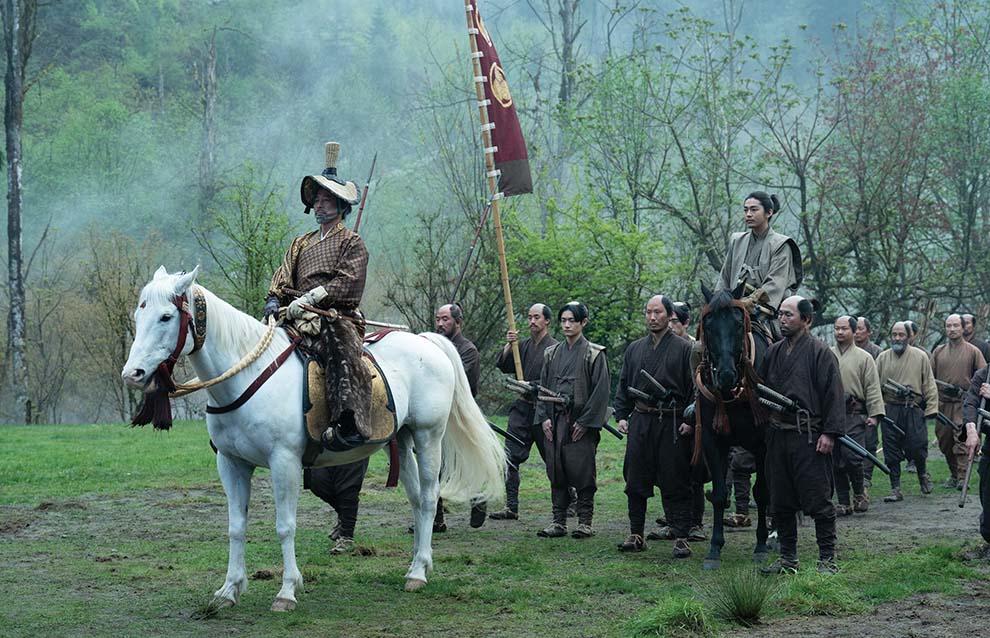
Shogun turned the spotlight on Japan's rich history and modern talent. "This is the most ambitious production in the history of FX," says the network's chairman John Landgraf. "The incredible beauty and attention to detail the producers devoted to re-creating feudal Japan is just breathtaking."
Filming took place in British Columbia, where set designers meticulously re-created feudal Japanese fishing villages, castles and battlefields. "It felt like the wettest, most difficult winter in Vancouver history," says Kondo.
The Shogun team paid exacting attention to every detail, from the samurai's elaborate helmets to the oil lamps shedding dim light in the palace's inner chambers. Questions of who belongs and what shapes one's shukumei, or fate, thread through each of the ten action-packed episodes. The scripts, composed in English, were translated to Japanese in Tokyo, then combed over by an expert in medieval Japanese vernacular. Miyagawa and Sanada then worked with each actor to personalize their lines. The resulting dialog was then painstakingly translated back into the English subtitles.
The result is a collaborative tour de force. Shogun is gorgeous, and Kondo's influence can be felt throughout. While remaining faithful to Clavell's text and to history, she and the other writers illuminated the interior lives of the female characters. "That's probably what I'm most proud of," says Kondo. "Showing the women's agency, without seeming untrue to the time. They were the most creative characters in that world, because they had to figure out how to wield power."
The courtesans Gin and Kiku exhibit a political savvy that sometimes surpasses that of the samurai they serve. The entire plot hangs on the actions of Lady Ochiba and Mariko, whom Kondo chose to portray as childhood friends. "They probably knew of each other," says Kondo of their real-life counterparts. "It's a very, very exclusive world," she says. "So, what if their choices later in life were motivated by the fact that they cared deeply for each other as girls?"
Mariko's character is based on a noblewoman who converted to Catholicism, Hosokawa Gracia, and throughout the series she recites poetry that Gracia composed. Anna Sawai, who plays Mariko, says she drew inspiration not only from Gracia but from Kondo and Kondo's recollections of her grandmother.
Tucked within Shogun's palace intrigue is a tribute to Kondo's father: the pigeons Toranaga uses to communicate with his spies. "My dad raised pigeons since he was nine," Kondo says. "In my mind he was the de facto pigeon consultant."
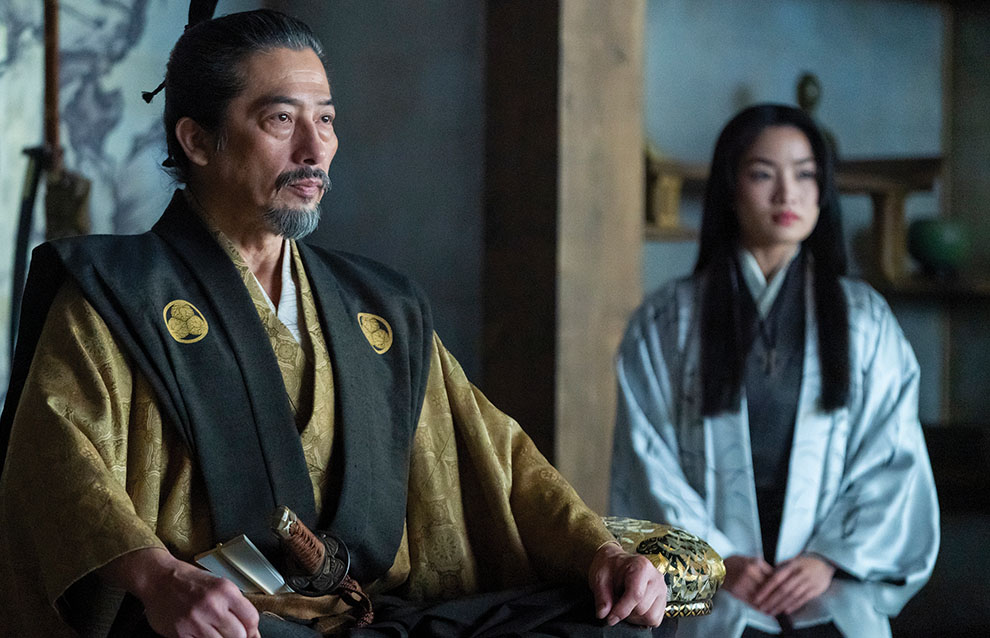
Celebrated actor Hiroyuki Sanada (left) was a power player on and off the set of Shogun, in his role as strategic warlord Toranaga and as co-producer ensuring each scene's authenticity. He and co-star Anna Sawai (right) both won Emmys for their roles in the reinterpretation of James Clavell's 1975 novel.
By the time Shogun premiered in February 2024, Kondo had given birth to a second daughter. She and Marks had devoted a significant stretch of their lives to this production. "It was a big gamble," she says. "It's a huge show and it cost so much money. We didn't even know if anybody would watch this."
Not only did people watch Shogun, they filmed TikToks of themselves reacting to each new episode. "It's mesmerizing to watch," says Kondo. "Especially when you know what's going to happen." One character's death particularly infuriated viewers. "I have never seen people angrier," she says.
Passion pays off in the entertainment biz. Time magazine claimed that this new iteration of Shogun "is not a remake so much as a radical reimagining ... a genuine masterpiece." The series received twenty-five Emmy nominations—more than any other show that year—and won eighteen, the most ever for a single season of a television series. Nearly everyone involved in the production got a nod. Kondo got three—as co-creator of the outstanding drama along with Marks, and as the writer of episodes one and nine.
After Marks finished filming episode ten, one of his bosses asked, Could this story continue? Marks shook his head. "The sets are gone. We'd have to build them again from scratch." Which is exactly what they're now doing. Shogun proved so popular that FX extended the limited miniseries into a full-fledged drama with two forthcoming seasons. This time Kondo and Marks don't have Clavell's novel as source material—but they do have history.
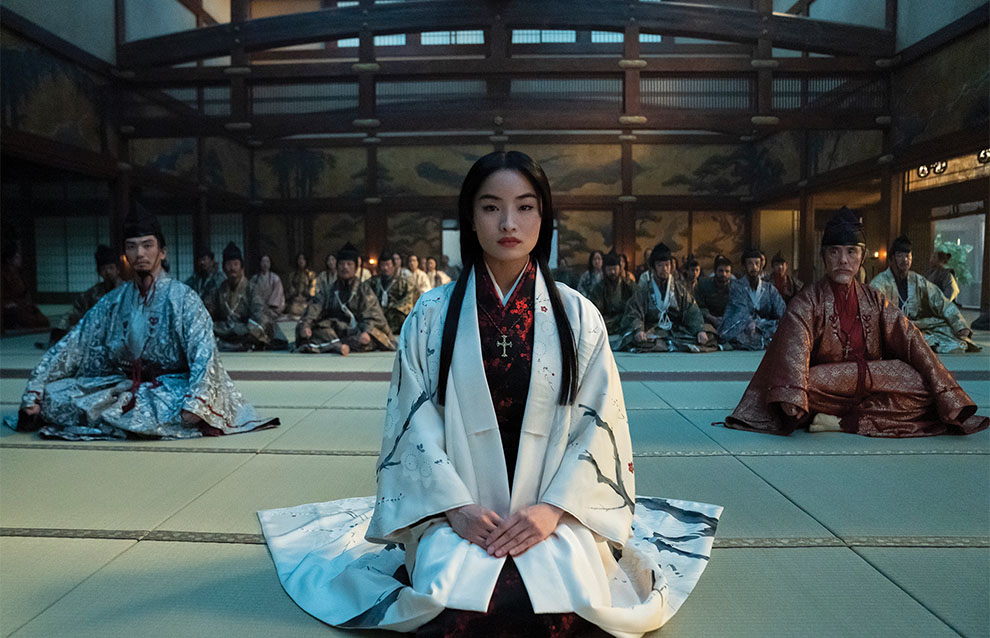
For her first foray into television production, Kondo had to rely on intuition. "You get the dailies every day, the first cut of one that's been edited and whatnot, while you're filming three and four. You can start to see what you have, but you have to just do a gut check and trust that it's good." Sawai (above) credited Kondo as an inspiration for her character, Lady Mariko.
The pair recently returned from a research trip to Japan, which coincided with Kondo's birthday. The Shogun cast surprised her with a karaoke party. Tokuma Nishioka, who plays beloved general Hiromatsu, performed a song he wrote while the karaoke screen broadcast his face. Next up was Eita Okuno—Toranaga's treacherous half brother—who danced and played air guitar. Then came Yuko Miyamoto, the courtesan Gin, with a surprise rendition of Japanese opera. "It was incredible," says Kondo.
In 2022 she and Marks moved to Maui to be closer to her family. Her childhood friend Destin Daniel Cretton enlisted her help with a summer film lab for Maui high school students. Remarkably, Cretton and Kondo followed parallel paths: They both came from Evangelical families, attended Maui High and Point Loma Nazarene University and emerged as major talents in Hollywood. Cretton, an award-winning filmmaker, couldn't be prouder of Kondo. "I think Shogun is perfect television. What she and Justin pulled off was mind-boggling. It is a bit of an out-of-body experience to watch a piece of art created by somebody that you know quite well and just be genuinely blown away," he says. "And yet when you speak to Rachel, she's so grounded and gracious and self-deprecating."
Kondo is now busily writing new episodes of Shogun. She's got two other projects simmering as well: a collection of short stories exploring the history of the Hamakua Ditch on Maui and a TV comedy featuring two brothers vying for a seat on the Maui County Council. That's good news for her growing fan base. Because as it turns out, audiences can't get enough of Rachel-Too-Much.


